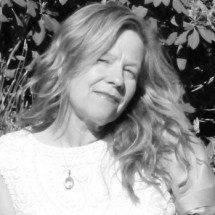There’s a saying that is frustratingly accurate when it comes to finding work in the film industry: “You can’t get a job without experience, and you can’t get experience without a job.”
Whether you are fresh out of film school, or coming into the industry with a completely blank slate, here are some tips to securing a job on set.
- Start With Your Address Book
If you have film industry contacts: contact them and ask if they have any leads, or if they’re working on a production that might need some more hands. Be polite but persistent, and ask them to keep you in mind for future work if nothing is currently available.
If you don’t know a single person in the film industry: ask your friends, your parents, or friends of the family if they know anyone who currently works in film. Sometimes a referral is all you need to get a chance at your first entry level position. Vancouver is booming right now, and you likely know someone – or someone who knows someone – that works on set.
- Take a Workshop
The Motion Picture Industry Orientation* course was developed in partnership between Creative BC, MPPIA and industry labour organizations. The two-day course is a mandatory entry requirement for most BC-based film unions, and is absolutely vital to stand out from the crowd when you apply for an entry level position.
*InFocus Film School offers this course – find more information here.

- Research Current Productions
Creative BC provides a comprehensive and up-to-date list of all the productions currently shooting in British Columbia, along with contact e-mails for each. Put together a resume that provides any relevant job experience, workshops and education and pair it with a concise cover letter. It always helps to have an insider contact, but it’s not necessary to get hired for an entry level position. All you need is a good attitude and a little luck.
You can find the list here.
- Learn How to Self-Promote
One of the best ways to attract attention as a film industry professional is to establish a web presence. A website can feature your demo reel, describe your services and show testimonials from past clients. Creating videos on Vimeo or Youtube is another great idea, because you can cultivate a body of work to serve as your portfolio. Face-to-face networking always has it’s benefits, and there are a number of companies online where you can order inexpensive business cards.

- Create Your Own Work
If you’re committed to your craft and prefer being your own boss, freelancing might be the ideal gig for you. There are several jobs in the film industry that are built for freelancing – video editing, camera work, audio engineering, and more. This option requires considerably more effort as you’re building your clientele, but it can be a very rewarding career move. Choose to specialize in one particular skill, and work to make a name for yourself.
There are many paths that lead to working in the film industry, as any established professional will tell you. The one thing they all have in common is dedication. Flexibility is an added bonus – sometimes accepting a position that’s outside your skill set can be a challenging and advantageous decision.








 InFocus film students were accorded insider access to the production that saw the transformation of two adjoining classrooms into a New York-style apartment.
InFocus film students were accorded insider access to the production that saw the transformation of two adjoining classrooms into a New York-style apartment.







 Film Director and Producer Mary M. Frymire has fearlessly grabbed the reigns of both Film Director and Producer for over 30 years. Traversing across Europe, South America and Asia, Frymire has worked on projects such as Martinique; Runaway Bay, a documentary about kids changing the world, to directing a 16mm film in Paris exploring cemeteries and catacombs, and moving to Spain to focus on a film about Carmen Amaya and the roots of Flamenco, while also studying Flamenco.
Film Director and Producer Mary M. Frymire has fearlessly grabbed the reigns of both Film Director and Producer for over 30 years. Traversing across Europe, South America and Asia, Frymire has worked on projects such as Martinique; Runaway Bay, a documentary about kids changing the world, to directing a 16mm film in Paris exploring cemeteries and catacombs, and moving to Spain to focus on a film about Carmen Amaya and the roots of Flamenco, while also studying Flamenco.







